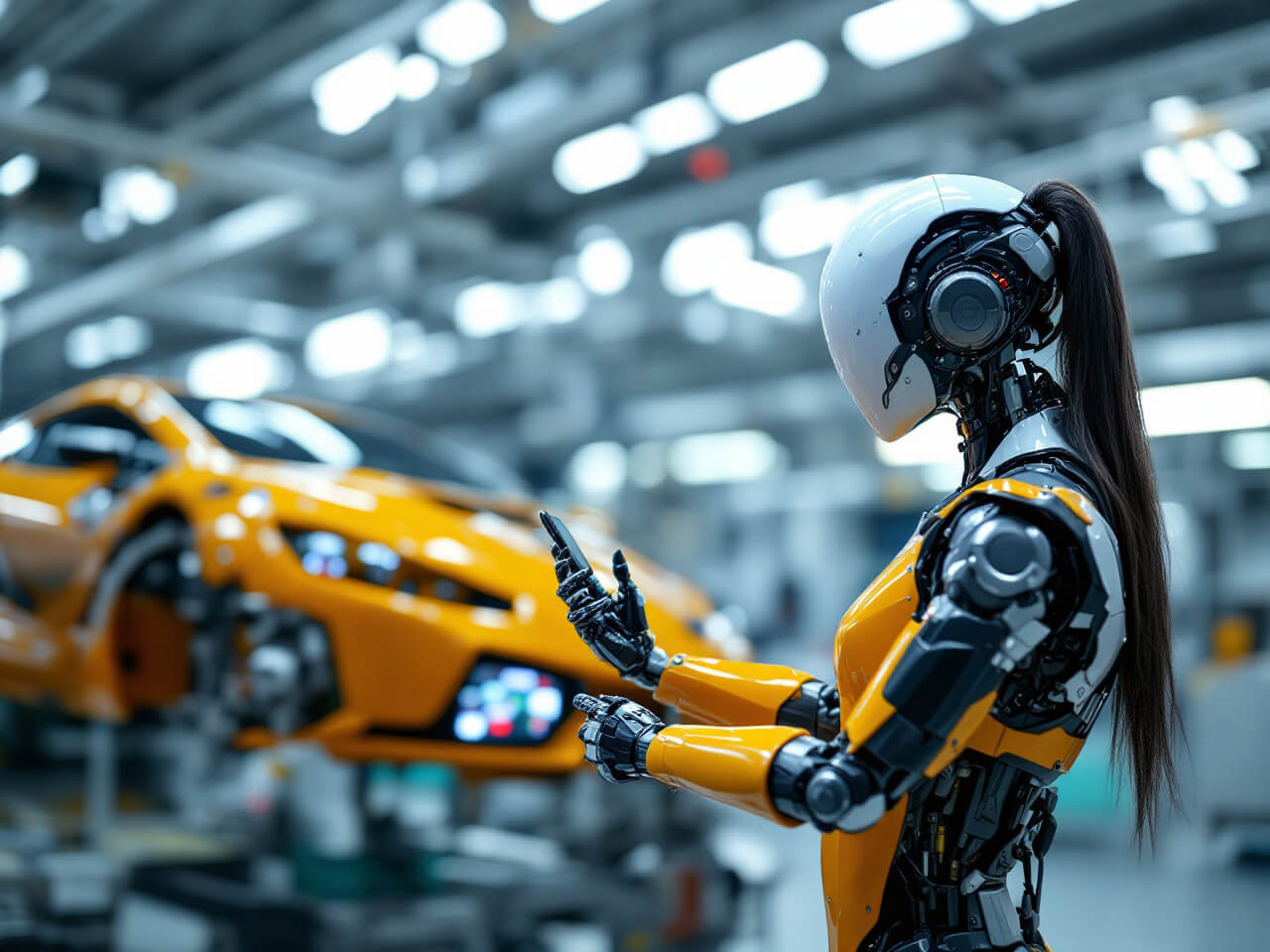Disrupting Decades of Global Supply Chains
Donald Trump’s hardball trade strategy is upending the global economic order. In cabinet rooms and corporate boardrooms worldwide, executives have scrambled to reckon with an “America First” agenda that few initially took seriously . Trump has made no secret of his protectionist bent – he even quipped that “the most beautiful word in the dictionary is tariff”. True to that mantra, his administration erected steep import tariffs on goods from rivals like China and also pressured allies for trade concessions. The result has been a seismic jolt to supply chains built over decades.
Trump’s proposed trade measures amount to the largest U.S. tariff increase since the 1930s . He has mused about a universal 10-20% tariff wall on all imports (with even harsher levies on certain countries). While not all such threats have been fully implemented, the direction is clear: the era of frictionless global trade is ending. Simply hinting at a 60% tariff on Chinese goods – five times current levels – sent multinationals scrambling . “Any country that records a large trade surplus with America, they think, is cheating America,” an analyst observes of Trump’s team. From electronics to autos, firms have been forced to rethink where they source and assemble products in order to navigate the new tariffs and avoid being the next target of White House trade volleys.
Fallout for China, Mexico and Europe
America’s trading partners have felt the sting of this disruption. China’s export engine has sputtered under the tariffs: analysts estimate a 60% duty on Chinese imports could slash China’s exports to the U.S. by half, shaving a full percentage point off Chinese GDP. Even before any new tariffs, Trump’s initial 2018–2019 duties – kept largely intact by Joe Biden – had already caused China’s shipments to America to shrink considerably. In Mexico, the stakes are arguably even higher. The U.S. buys over four-fifths of Mexico’s exports, an amount equal to 27% of Mexico’s entire GDP. Trump has threatened 25% tariffs on Mexican goods (and even steeper taxes on auto exports), a move that would “hurt Mexico badly” given its heavy dependence on the northern neighbor.
Europe, too, is anxiously eyeing Washington’s trade salvos. The European Union enjoys a $200 billion merchandise trade surplus with the U.S., and a blanket tariff hike could shave 0.5% off Europe’s GDP – with export powerhouses like Germany bearing the brunt. “If a tsunami of tariffs were to materialize, few countries would prosper,” economists warn. From Vietnam (which saw a $100 billion surplus with America last year) to Japan, South Korea and beyond, export-reliant economies are bracing for tougher days. Some U.S. allies may secure exemptions, and a few countries could gain by “simply not being China”, picking up business from firms diversifying away from Chinese suppliers. But overall, Trump’s trade war has flipped the script: nations that thrived under globalization are now grappling with slower growth and uncertainty as the U.S. market becomes less open.
Production Lines “Coming Home” to America
Trump’s confrontational tactics have triggered a migration of manufacturing that would have seemed far-fetched a decade ago. Companies that once offshored with abandon are moving production closer to the U.S. – if not on American soil itself. “Some multinational firms will accelerate relocation efforts,” The Economist notes, citing examples like Steve Madden (the U.S. fashion company) which announced plans to move its Chinese production lines elsewhere, and Stanley Black & Decker, which said it will do the same if Trump’s tariffs intensify. In fact, for the first time in modern history, Mexico has now surpassed China as the United States’ top trading partner by export volume. U.S. imports from Mexico have surged (from $320 billion before COVID to $422 billion now), while imports from China fell sharply – down 20% in 2023 alone, a $105 billion drop. American companies and consumers are also starting to “buy American” again, reversing a long decline in domestic sourcing: a U.S. self-sufficiency index that had slid for years turned upward in 2021 and jumped 5% between 2022 and 2023.
This trend is borne out by hard numbers. Reshoring – the return of manufacturing to the U.S. – is at record levels. The latest annual tally shows 287,000 American jobs were announced to be brought back or created via foreign direct investment in 2023, the second-highest year ever recorded. Cumulatively since 2010, nearly 2 million factory jobs have been lured back to the United States (about 40% of the positions originally lost to offshoring). Major firms are pouring billions into new U.S. plants for semiconductors, electric vehicle batteries, and other high-tech goods. After decades when new factories tended to rise in China or Southeast Asia, today the cranes and construction crews are busy in states like Ohio, Arizona, and Texas. “Made in America” is no longer just a slogan – it’s becoming a competitive reality, as evidenced by the wave of plant openings and expansions across the country.
Reshoring + FDI (foreign direct investment) in U.S. manufacturing is surging. Cumulative jobs announced since 2010 (blue line) show a sharp acceleration in reshoring after 2017, reaching nearly 1.9 million by 2023. This illustrates a significant reversal of the offshoring trend that defined prior decades.
The strategic logic behind this industrial rebirth is twofold: shorten supply chains for resilience, and seize the advantages of new technology. Geopolitical shocks like the pandemic and war have underscored the risks of overreliance on distant factories. At the same time, Washington’s policy moves – from tariffs to federal incentives – are “driving investments that shorten supply chains, enhance domestic resilience, and bolster economic security,” notes the Reshoring Initiative, which tracks these trends. In short, Trump’s trade posture has catalyzed a broader realignment in which making things in America is not only politically desirable but economically viable again. As a result, money that once flowed out to overseas plants is now being plowed into U.S. manufacturing infrastructure at historic levels.
The Rise of the Robots: America’s Automation Edge
One reason the United States can afford to bring manufacturing home is its increasing mastery of automation. After all, robots don’t demand wages or shift the balance of power in trade talks. Over the past few years, American factories have installed industrial robots at a blistering pace. Nearly 382,000 robots are now working on U.S. assembly lines – an all-time high, and an increase of 12% from the prior year. Even as overall manufacturing employment has grown, companies are investing heavily in technology to do the heavy lifting. Last year alone, U.S. manufacturers ordered roughly 37,000–44,000 new robots (estimates vary), marking one of the highest installation counts on record. The automotive sector – gearing up for electric vehicle production – remains the largest robot buyer, but other industries like electronics, metals, and plastics are also posting double-digit growth in automation adoption.
Analysts say this robotics revolution is a key enabler of Trump’s goal to onshore production. By deploying advanced automation and artificial intelligence, U.S. firms can produce more efficiently with fewer workers, narrowing the cost gap with low-wage countries. Entire industries are approaching lights-out manufacturing. “Already entire sectors of the economy are essentially fully automated – semiconductor production for example,” observes one market research note. The same note predicts “massive disruption is on the way” in fields from trucking (America’s most common male occupation) to basic assembly-line work, as AI and robotics replace repetitive human labor. In other words, the old assumption that manufacturing must seek out cheap labor is being turned on its head. Cheap labor is no longer the decisive ingredient for industrial success when “billions of laborers are no longer necessary for production” in the age of automation. Technology, capital, and raw materials – combined with access to markets – will rule the day, and by leading in AI-driven production technology, the U.S. holds the keys to future economic growth.
Trump’s policies have explicitly aimed to accelerate this tech-centric manufacturing renaissance. His trade war is often framed as a fight for industrial jobs, but it has also functioned as an incubator for automation. By raising the cost of imported goods (and imported labor indirectly), tariffs “nurture new ways of local production”. One financial analyst argues that “everything that has been done so far fits the picture: extreme protectionism – tariffs to nurture local production; [and] sanction and bully anyone who could be a competitor, all in the name of giving your own industrial base time to switch gears”. In practice, the U.S. government has restricted China’s access to cutting-edge semiconductors and sanctioned rival tech firms, buying time for American industry to solidify its lead in critical technologies. It has also tightened the labor pool through immigration curbs, which, while controversial, put upward pressure on wages and give employers more incentive to automate. The cumulative effect is a domestic manufacturing sector that is leaner, more technologically advanced, and less dependent on cheap labor than at any point in U.S. history.
From Globalization to “U.S. Robotization”
What we are witnessing is the dawn of a new era: a shift from globalization to American-led robotization of industry. In the 1990s and 2000s, the playbook for manufacturers was to chase low-cost labor around the globe – build in China, assemble in Mexico, source from wherever costs were lowest. Trump’s tenure has radically altered that calculus. By putting stress on the entire system, as one observer puts it, the U.S. is betting it can “out-innovate competition and come out materially ahead”. Early signs suggest this bet is paying off. U.S. factory output is rebounding, even as manufacturing in many export-oriented economies slows. American industrial investment is soaring, bolstered not only by tariffs but also by business-friendly tax cuts and deregulation. (Investors began shifting capital to the U.S. in anticipation of Trump’s corporate tax cuts and looser rules, helping drive the S&P 500 to record highs even as global stocks lagged . “We are already in a mix of strong performance of the US economy [and] weakness in the rest of the world,” says Eswar Prasad, a Cornell University trade policy expert, noting it’s becoming “increasingly difficult for fund managers to diversify away from the US market.” Financial capital, like manufacturing, is being drawn back to America’s shores by the promise of higher returns.
Crucially, the new U.S.-centric manufacturing model is underpinned by advanced technology. Robots and AI are America’s new arsenal in the economic arena, enabling the U.S. to produce competitively at home even with higher labor costs. This means the benefits of production – jobs (particularly high-skilled jobs), investment, innovation clusters – accrue to the United States rather than overseas. “Deregulation can also give US firms a cost advantage,” adds Luis Garicano, a European economist, pointing out that if the U.S. relaxes rules and lowers energy costs while Europe stays the course on regulation, Europe could “lose out completely in production.” In other words, America is not just bringing back factories – it’s leapfrogging into a future of smart factories that will be hard for others to match, especially if they cling to the old globalist model.
Trump’s economic nationalism, once derided by elites, has undeniably reordered the landscape. China’s once-unstoppable export machine is slowing under U.S. pressure, Europe’s industrial giants are reassessing their strategies, and emerging economies from Vietnam to India must adapt as the rules of trade change. Meanwhile, U.S. manufacturing is mounting a comeback – one powered less by sweat and more by silicon and steel. It’s a bold and risky gambit, but one with a clear narrative: after decades of sending work abroad, the United States is reclaiming its supply chains and spearheading a high-tech industrial revolution at home. The shift may still be in its early innings, but its impact is already visible in the towering new chip fabs and EV battery plants across America’s heartland.
This transformation marks a definitive pivot away from globalization and toward what might be called American “robotization” – a model where the U.S. leads by leveraging automation and innovation on its own turf. By disrupting the old order, Trump’s trade crusade has set into motion a trend many thought impossible: factories humming on U.S. soil, robots on the assembly line, and the United States at the forefront of a new manufacturing era. It’s a revolution in real time, and for the first time in a generation, the industrial winds are blowing in America’s favor. The long-term winners and losers of this upheaval are still taking shape, but one thing is certain – the rules of the game have changed, and the U.S. isn’t waiting for the world to catch up.













